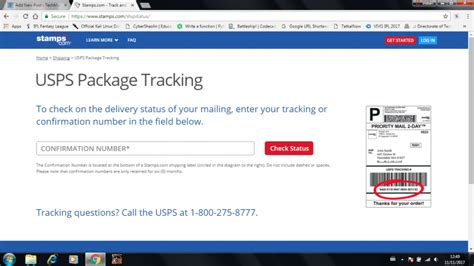How Much Money Does Instacart Make

Instacart, the popular grocery delivery and pickup platform, has revolutionized the way people shop for groceries. With its convenience and expanding reach, it has become a significant player in the e-commerce industry. The question on many minds is: How much revenue does Instacart generate, and what factors contribute to its financial success? In this comprehensive analysis, we delve into the world of Instacart's business model, exploring its revenue streams, growth strategies, and the challenges it navigates to understand the company's financial landscape.
Unveiling Instacart’s Revenue Model

Instacart’s revenue generation is a multi-faceted process, with several key components contributing to its financial success. Here’s a breakdown of its primary revenue streams:
Service Fees and Tips
Instacart’s core revenue stream comes from service fees charged to customers. These fees vary based on the order size and delivery time, with customers often having the option to select a preferred delivery window. Additionally, the platform encourages customers to tip their shoppers, with suggested tip amounts displayed during the checkout process. These tips significantly contribute to Instacart’s overall revenue, as they are a crucial part of the shopper’s earnings.
To illustrate, let's consider a hypothetical scenario. A customer places an order totaling $100, with a service fee of $5.99, resulting in a total charge of $105.99. If the customer tips the shopper $5, the shopper's earnings for that order would be $10, contributing to Instacart's revenue generation.
| Order Total | Service Fee | Customer Tip | Shopper Earnings |
|---|---|---|---|
| $100 | $5.99 | $5 | $10 |

Partnerships and Commissions
Instacart has forged partnerships with various grocery retailers, allowing it to offer a wide range of grocery options to its customers. These partnerships often involve Instacart collecting a commission on each order placed through its platform. The commission rates can vary based on factors such as the retailer’s exclusivity and the volume of orders.
For instance, Instacart may partner with a national grocery chain, agreeing to a commission rate of 10% on all orders placed through its platform. If a customer spends $50 on groceries from this retailer, Instacart would earn $5 in commission.
Ads and Promotions
Instacart leverages its platform to generate revenue through advertising and promotional opportunities. Retailers can pay to have their products featured prominently on the app or website, increasing their visibility to customers. Additionally, Instacart may offer promotional discounts or incentives, funded by retailers, to encourage customer purchases.
Imagine a scenario where Instacart partners with a popular snack brand, featuring its products on the app's homepage. The brand pays Instacart a fee for this prime advertising space, ensuring its products receive maximum exposure to potential customers.
Enterprise Solutions
Instacart offers enterprise solutions to retailers, providing them with tools and technologies to enhance their online presence and streamline their delivery operations. These solutions can include custom websites, order management systems, and delivery optimization tools. Retailers pay a subscription fee or a one-time implementation cost for access to these enterprise solutions.
Consider a large grocery retailer that partners with Instacart to develop a custom online grocery platform. The retailer pays Instacart an annual subscription fee, granting them access to the platform and its features, which helps streamline their online operations and improve customer experience.
Instacart’s Growth and Expansion Strategies

Instacart’s success is not solely attributed to its revenue model; the company has strategically expanded its reach and offerings to attract a wider customer base and drive growth. Here are some key strategies Instacart has employed:
Expanding Retailer Partnerships
Instacart has continually expanded its partnerships with grocery retailers, both locally and nationally. By partnering with a diverse range of retailers, Instacart offers customers a vast selection of grocery options, catering to various preferences and dietary needs.
In recent years, Instacart has focused on partnering with specialty retailers, such as organic grocery stores and boutique wine shops, to provide customers with unique and niche product offerings.
Geographic Expansion
Instacart’s geographic expansion has been a critical component of its growth strategy. The company has steadily expanded its service areas, reaching more cities and neighborhoods across the United States and Canada. By increasing its geographic footprint, Instacart can serve a larger customer base and tap into new markets.
In 2022, Instacart announced its expansion into several new cities, including Seattle, Denver, and Toronto, solidifying its presence in these regions and offering its services to a wider audience.
Diversifying Services
Instacart has evolved beyond grocery delivery, diversifying its services to meet the changing needs of its customers. The company now offers alcohol delivery, prescription pickup and delivery, and even same-day delivery for non-grocery items, such as household essentials and personal care products.
By diversifying its services, Instacart has positioned itself as a one-stop-shop for customers, providing convenience and efficiency for various shopping needs.
In-Store Shopping and Pick-up
Instacart has introduced in-store shopping and pick-up options, allowing customers to place orders online and then pick up their groceries at a designated time from a local store. This service not only provides customers with a convenient option but also helps retailers manage their inventory and reduce delivery costs.
Instacart's in-store pick-up service has gained popularity, especially during busy holiday seasons or for customers who prefer a contactless shopping experience.
Challenges and Future Prospects
While Instacart has experienced tremendous growth and success, it faces several challenges that could impact its financial trajectory. Understanding these challenges is crucial for assessing Instacart’s future prospects.
Competition in the Grocery Delivery Space
The grocery delivery industry has become increasingly competitive, with several players vying for market share. Companies like Amazon Fresh, Walmart Grocery, and Doordash have all entered the space, offering similar services to Instacart. This competition can lead to price wars and the need for Instacart to differentiate its offerings to maintain its customer base.
Rising Operational Costs
Instacart’s business model relies heavily on its network of shoppers and delivery drivers. As the company expands, the costs associated with managing this network, including payroll, benefits, and insurance, can significantly increase. Additionally, the company must invest in technology and infrastructure to support its growing operations, further adding to its operational expenses.
Changing Consumer Behavior
Consumer behavior and preferences are dynamic, and Instacart must adapt to these changes to remain relevant. As more consumers embrace online shopping and delivery, Instacart needs to continuously innovate and enhance its platform to meet evolving expectations. This includes improving user experience, offering personalized recommendations, and providing efficient delivery options.
Regulatory and Legal Considerations
Instacart, like many gig economy platforms, faces regulatory and legal challenges. The classification of its shoppers and drivers as independent contractors has come under scrutiny in various jurisdictions. Changes in labor laws or court rulings could impact Instacart’s business model and increase its operational costs.
Future Prospects and Potential Innovations
Despite these challenges, Instacart has demonstrated its resilience and adaptability. The company has successfully weathered past challenges, such as the COVID-19 pandemic, which significantly increased demand for its services. Instacart’s ability to pivot and innovate suggests that it is well-positioned to navigate future challenges.
Looking ahead, Instacart could explore new avenues for growth, such as expanding its international presence or further diversifying its services. Additionally, the company may focus on developing cutting-edge technologies, such as autonomous delivery vehicles or advanced inventory management systems, to stay at the forefront of the grocery delivery industry.
FAQ
How much does Instacart charge for delivery fees?
+
Instacart’s delivery fees vary based on order size and delivery time. The company offers different delivery options, including scheduled deliveries and same-day deliveries, with corresponding fee structures. The fees can range from a few dollars to over 10, depending on the order and delivery preferences.</p> </div> </div> <div class="faq-item"> <div class="faq-question"> <h3>Does Instacart charge a subscription fee?</h3> <span class="faq-toggle">+</span> </div> <div class="faq-answer"> <p>Instacart does offer a subscription service called Instacart Express. With Instacart Express, customers can enjoy unlimited free delivery on orders over a certain threshold, typically 35. The subscription fee varies depending on the subscription plan and the customer’s location.
How does Instacart calculate commissions for retailers?
+
Instacart’s commission rates for retailers can vary based on factors such as the retailer’s exclusivity, order volume, and the duration of the partnership. The company typically negotiates commission rates with retailers, taking into account various factors to determine a fair and mutually beneficial arrangement.



